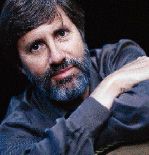
ORACLE BONES, THE
April 30th, 2004

Script Review: THE ORACLE BONES by Ron Bass
by Darwin Mayflower
WARNING: SPOILERS!
(12/21/00)
NOTE: The screenplays we review are often in development and may experience many rewrites, some could end up being completely different than what is reviewed here. It is our hope that our reviews generate more interest in the film. Thank you.
Ive been told, by a few people -- a speck among the mass -- that my reviews have become a bit too negative. A touch...mean-spirited. Too négatif. Too mitoyen. Too, as the French would say, vous n'alimentons jusq'ici celui-ci langue.
So, despite all your E-mails informing me how you appreciate my low threshold for rubbish and like that I succinctly point out quite a few of Hollywoods constant errors (while maintaining decorum and not traducing writers), Im going to indulge the minority. Ive reached back -- way back -- to find a screenplay that would engender a "nice" review. And present to you the fuzzy-wuzzy side of I, Darwin Mayflower.
I opened up the vault and have extracted a hoary script by Lord Prolific Ron Bass. Which was written about the time I was born.
This script, titled THE ORACLE BONES, was penned before Ron was a mega-star screenwriter, while he was just making the transition from novelist to scriptwriter, and prior to his adopting what is now his recognizable, famous style. Which is made up of the use of ellipsises --
...a dark FIGURE. All in black, nearly invisible, with a sleek visored helmet that conceals the face. Two long, oblong backpacks, climbing ropes and harness across back and shoulders, tools at the belt. Moving STRAIGHT UP the face of the skyscraper. How is it possible? CLOSER still to see... ...the piton-like BOLTS are electromagnetic, CLANKING to the steel to support weight. A button releases the magnetic charge when the bolt is pulled up by cords to a higher position. The Thief is remarkably strong and agile, scaling the wall with fluid precision, until... ...our summit. A softly-lit, glass-walled PENTHOUSE on the 100th floor. Subtle spots which bathe paintings, sculptures, in a cavernous, coldly-decorated space.
(ENTRAPMENT by Ron Bass; page 1; first draft; December 2, 1996.)
-- and also a broken-speech dialogue that uses periods to indicate pauses and breaks in the language (Richard Price does a similar thing with commas) --
MAC Time has come to tell you. What business. Im actually in.
(ENTRAPMENT by Ronald Bass; page 37; first draft; December 2, 1996.)
-- and Rons singular, personal inclusion (listing a persons emotions and feelings in relation to others dialogue) --
JULIANNE ...not trusting me? No. The neighborhood used to be much nicer, believe me. He does. JULIANNE Turns out, he was a big disappointment. Yeh, well... AARON I cant understand what you saw in that guy in the first pl... JULIANNE ...hes a type, you know. Charming, intelligent, worldly. Smart enough to hide how self-centered and con- trolling his is...
(MANHATTAN GHOST STORY by Ronald Bass; pages 30-31; September 17, 1996.)
Ron had not yet penned the critically claimed novel LIMES CRISIS, but he had published THE PERFECT THIEF (if anyone out there has this book I will literally FedEx one of my kidneys to you just to be able to read it) and I think it might have inspired this -- as it most likely inspired ENTRAPMENT.
THE ORACLE BONES reflects a different epoch in filmmaking. At the same time refreshing and a slap-in-the-face wakeup. THE ORACLE BONES, like THE PERFECT THIEF and ENTRAPMENT, is about a master criminal who steals high-end art and sells it to billionaire private collectors.
Both ENTRAPMENT and BONES center around the historic Oracle Bones (which are the first evidence of a literate Chinese society), but the deviation is startling: While ENTRAPMENT was basically a romance with explosions -- it was busy. Ive never read a screenplay that shocked me with its technical brilliance the way that script did. BONES, on the other hand, is silent and verbose. Decisions arent made with bombs and action scenes but with discussions.
Comparing the two scripts, which have proportional jetset, intrigue-heavy plots, one could look at it this way: To get a super-romantic May-December relationship on the screen Ron had to blow up a few buildings (and, of course, it never made it to the screen; but Ive gotten into this elsewhere). BONES has a union between a vulnerable young woman and an older thief. And their partnership is just vague enough, just cognizant enough, to let you know exactly who these people are and why theyre together without ever having to rap it over your head.
Ron made a nice chunk of money from espionage novels and this script reflects that sensibility. Espionage books and movies, like their noir brother, follow a furrow in the plot-road. That is, whether theyre good or bad. And this is no different. Mysterious goings-on and dealings take place. Various high-level men talk the talk, trying to pry open a tiny advantage. No one can be trusted. Everyone is playing their own angle. And in the end all is, hopefully, settled quickly and simply -- usually with a shooting or a comparable death.
What I personally like about these types of stories is that even the very best can be nudged into boilerplate-potboiler territory. The plots exist on the peak of a high mountain. The slightest breeze can knock it over. And the fun is watching the author show his mettle and tame the unruly beast.
Ron does that here...somewhat. The story is of the greatest thief that ever lived. Hes pulled off the impossible -- or did he? The man is said to have robbed the Oracle Bones from the National Palace Museum in Taipei (a similar plot line was actually seen in Rons draft of ENTRAPMENT).
The few bidders that know of this are drooling for the Bones. Particularly one Bone, the Black Bone, which is said to predate all existing evidence of a literate society.
The problem is that no one knows if the thief actually has the Bone. And if he does -- is it real?
If the script has a problem its that theres too many characters, too much going on, and were held off at the environs of the story too long. Were not totally sure whats going on till the last twenty pages of the script.
The denouement hinges on a man wearing a disguise the entire time. This works in novels -- but its hard to pull off in films. First of all, as accomplished as Hollywood make-up people are, they seem unable to craft a full-face guise for an actor that doesnt reveal his identity. In a novel you never have to tell the reader who a person is; in a movie the audience is going to see him/her -- in closeup -- for two hours.
Since the resolution is a bit slight, and even odd in its brevity, one is tempted to say that the payoff wasnt worth the buildup. But you have to pause and think back on what youve read. What Ron has given us is a "quiet thriller" -- an intelligent script where people actually sit and talk and deal with things in a realistic way. The "master thief" is not, in any way, a superhero. He has his downtime, his fears, his doubts, and his love. Ron has dared to create a truly human hero in a non-drama.
There are no car chases. And we never even get to see the thief in action. Its all about the psychology. Who these people are. What they are guarding. What side they are trying to exploit. What gambit they are hiding.
It is fun, I must say, to see a handful of guarded, worldly people try to outwit each other.
The script resolves into a huge, globetrotting chess match. It becomes nearly demulcent and galvanizing in its acumen, knowledge and quietude.
Ill admit I miss Rons style. And Im glad he branched out and became the innovator/mastermind he is today. But the script illuminates a time, style and climate thats quickly becoming obscured. A time when the characters we watched were more intelligent than us. And we wished to live in their world. And felt privileged to know them.
Now, it seems, we curse filmmakers stupidity and talk of how we, as non-filmmakers, could do the job better.
I dont think thats what people said, from the 30s through the 70s, when the movies we see raped and ripped off (over and over again, obscenely) were actually made.
THE ORACLE BONES is a big-boned, forgotten, broken-winged bird from an effortless master; it is a tinged-with-date piece that shows signs of its strong legs and, more importantly, brightens a path that is slowly, inexorably, being swallowed by darkness.
-- Darwin Mayflower.
Photo Credit, WGAwMore recent articles in Script Reviews
Only logged-in members can comment. You can log in or join today for free!
Advertisement






